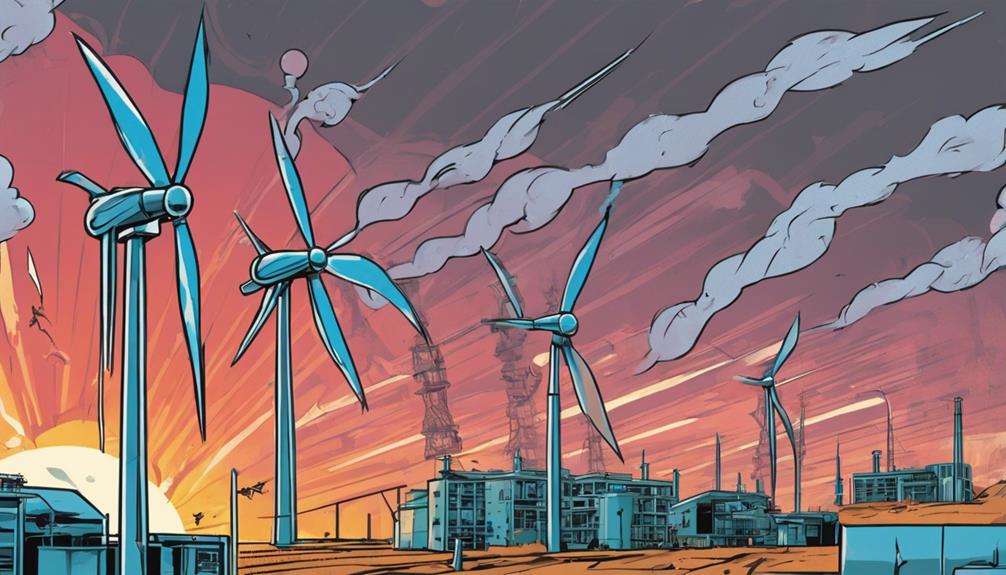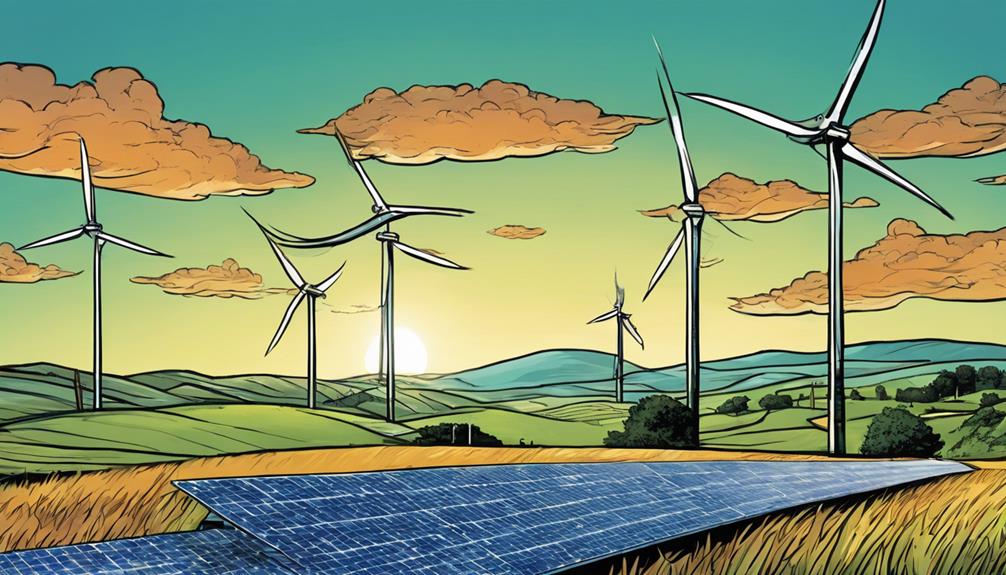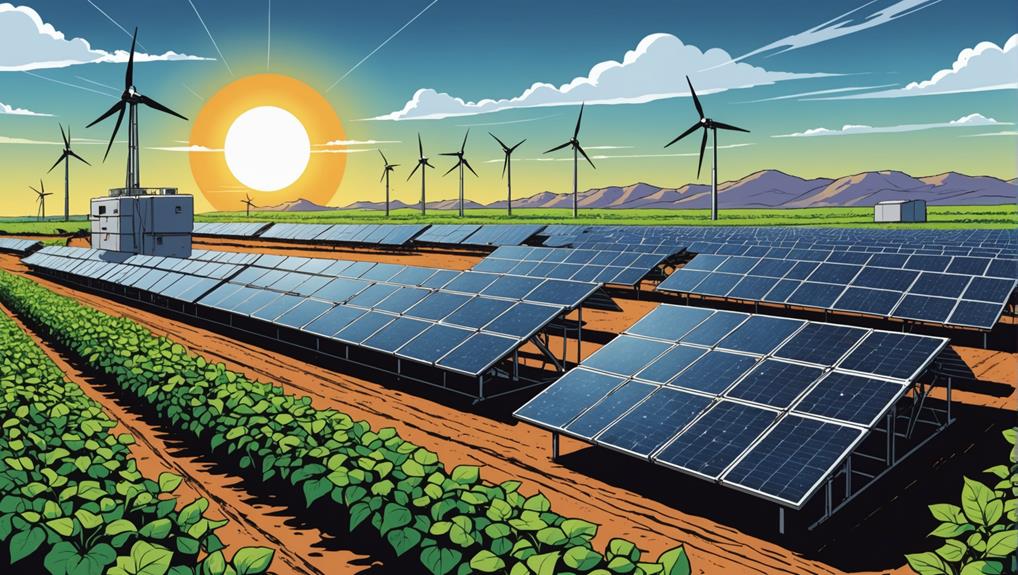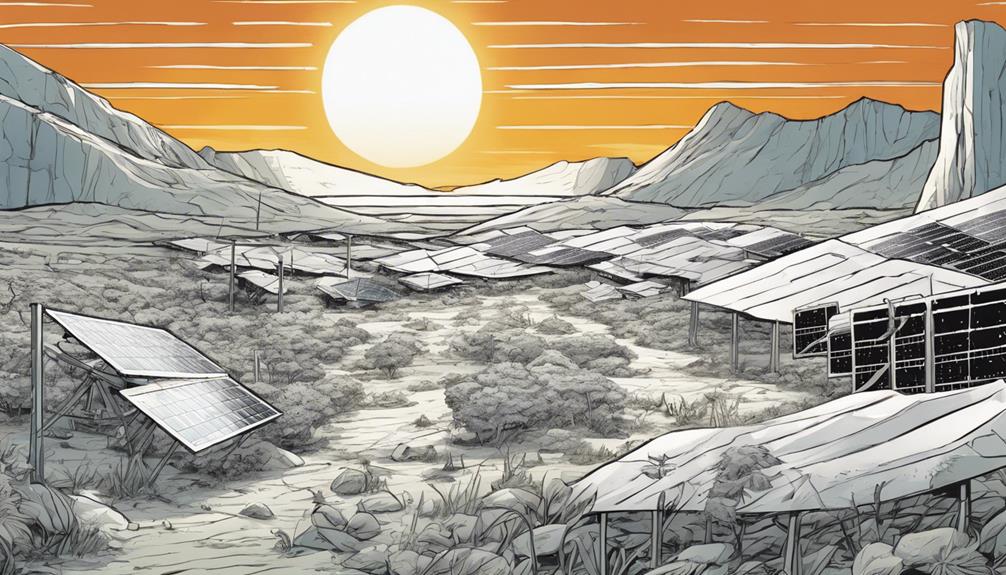As I explore the world of renewable energy, it's clear that wind turbines and solar panels are the top contenders in the race to replace fossil fuels. But what are the real costs, environmental impacts, and efficiency rates of these alternatives? Wind turbines can cost anywhere from $7,000 to $70,000 annually, while solar panels' affordability depends on system size, quality, and installation. Environmental impacts vary greatly, with wind turbines having a larger footprint and solar panels posing recycling challenges. Meanwhile, wind turbines boast efficiency advantages with advanced control systems and larger rotors. There's more to unpack in this renewable energy showdown.
Key Takeaways
- Wind turbine costs vary widely, ranging from $7,000 to $70,000 annually, with long-term benefits including energy generation and ROI.
- Solar panel costs are influenced by system size, quality, installation, and maintenance, with higher-quality panels offering better efficiency and durability.
- Wind turbines have a larger environmental footprint, noise pollution, and land clearing, while solar panels have a smaller footprint and minimal noise impact.
- Wind turbine efficiency has improved with advances in design, materials, and control systems, making them competitive with fossil fuels.
- Solar panels pose eco-friendliness challenges in production processes, waste management, and land requirements, despite their renewable energy benefits.
Wind Turbine Cost Breakdown
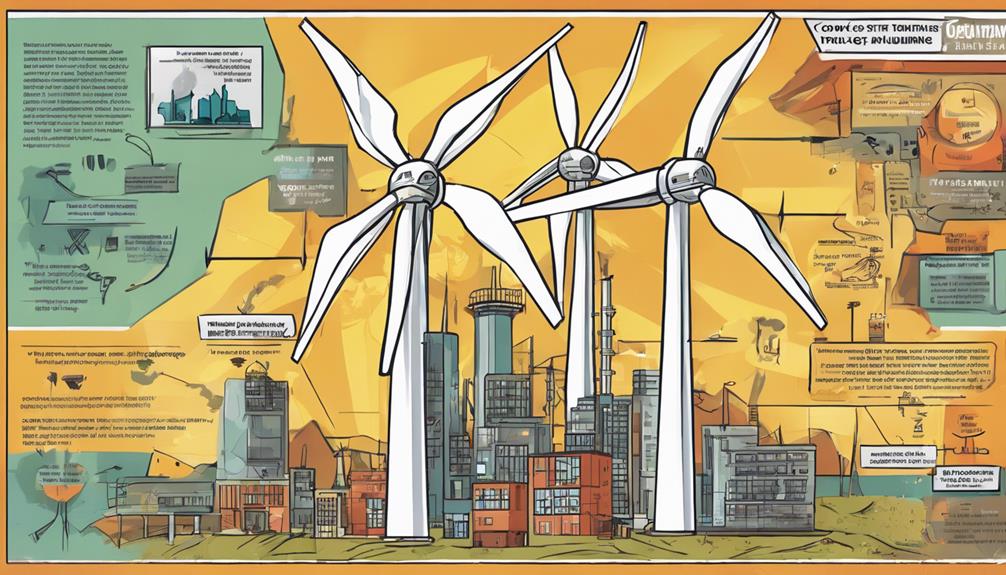
As I explore the world of renewable energy, I'm struck by the varying costs associated with wind turbines, which can range from $7,000 to $70,000 annually, depending on the size and energy needs of the installation.
A 1.5 kW turbine, for instance, averages around $7,000 per year. While these costs may seem steep, the long-term benefits make wind turbines a viable option. They can generate significant energy, offsetting electricity costs and providing a return on investment.
Additionally, advancements in technology have enhanced wind turbine efficiency and reliability, making them a more attractive choice. By understanding the cost breakdown, individuals and businesses can make informed decisions about investing in wind turbines.
Solar Panel Affordability Factors

When it comes to solar panels, the cost is influenced by a combination of factors. This includes system size, quality, and installation and maintenance requirements. A typical household may need around 16 panels. Higher quality panels are pricier but offer better efficiency and durability.
Installation complexity and maintenance also affect overall costs and performance. Informed decisions balance cost and long-term benefits for solar panel installations. While the initial investment may seem challenging, the long-term savings and environmental benefits make solar panels a viable option.
Environmental Impact Comparison
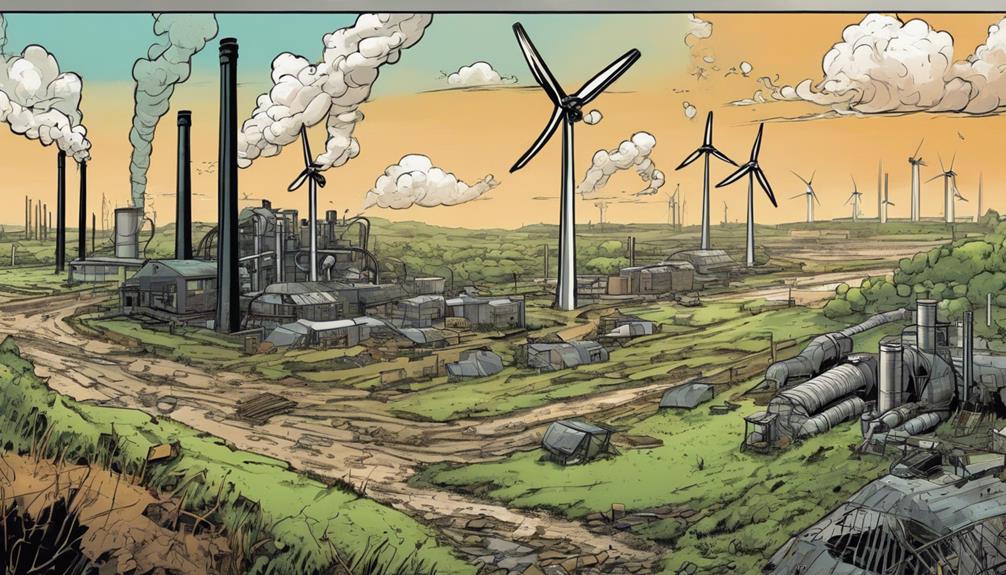
I'm now considering the environmental impact of both wind turbines and solar panels, weighing the pros and cons of each to make an informed decision about which renewable energy source is best for me. While wind turbines can generate significant energy, they also come with notable environmental drawbacks, such as noise pollution, land clearing, and potential harm to wildlife. On the other hand, solar panels offer a quieter, more compact alternative, but their production and disposal can lead to hazardous waste and environmental challenges.
| Environmental Impact | Wind Turbines | Solar Panels |
|---|---|---|
| Land Use | Large footprint, land clearing | Smaller footprint, no land clearing |
| Noise Pollution | Significant noise impact | Minimal noise impact |
| Waste Management | No hazardous waste | Hazardous waste, recycling challenges |
Wind Turbine Efficiency Advantages
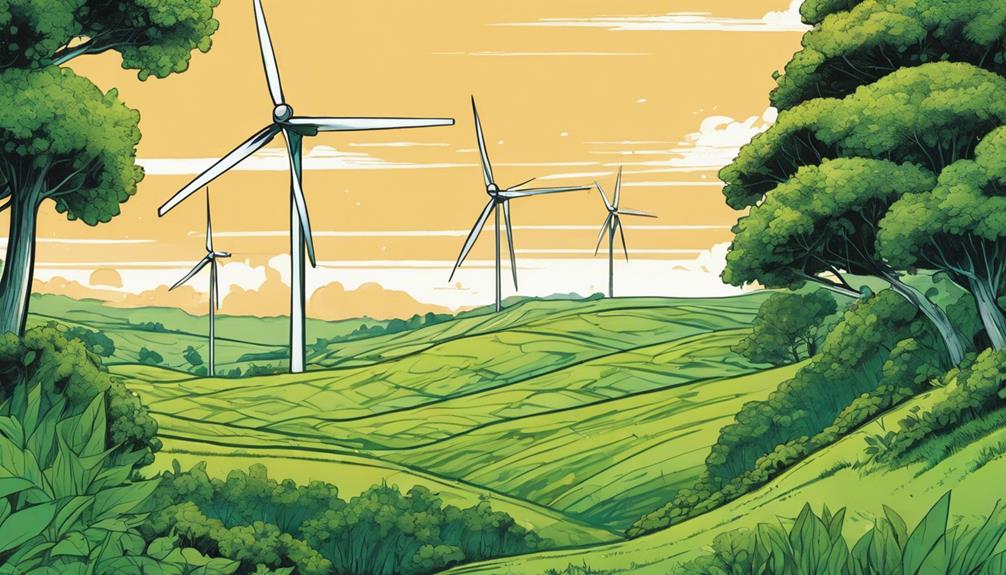
Optimizing wind turbine efficiency involves leveraging cutting-edge technologies and strategic placement to maximize energy production, making them a compelling choice for those seeking reliable renewable power.
I've found that advances in turbine design and materials have greatly improved their performance. For instance, larger rotors and higher hub heights enable turbines to capture more wind energy, resulting in increased power output. Additionally, advanced control systems and sensors optimize turbine performance in varying wind conditions.
These innovations have led to a substantial decrease in the cost of wind energy, making it more competitive with fossil fuels. As a result, wind turbines have become an attractive option for individuals and businesses looking to reduce their carbon footprint.
Solar Panel Eco-Friendliness Challenges
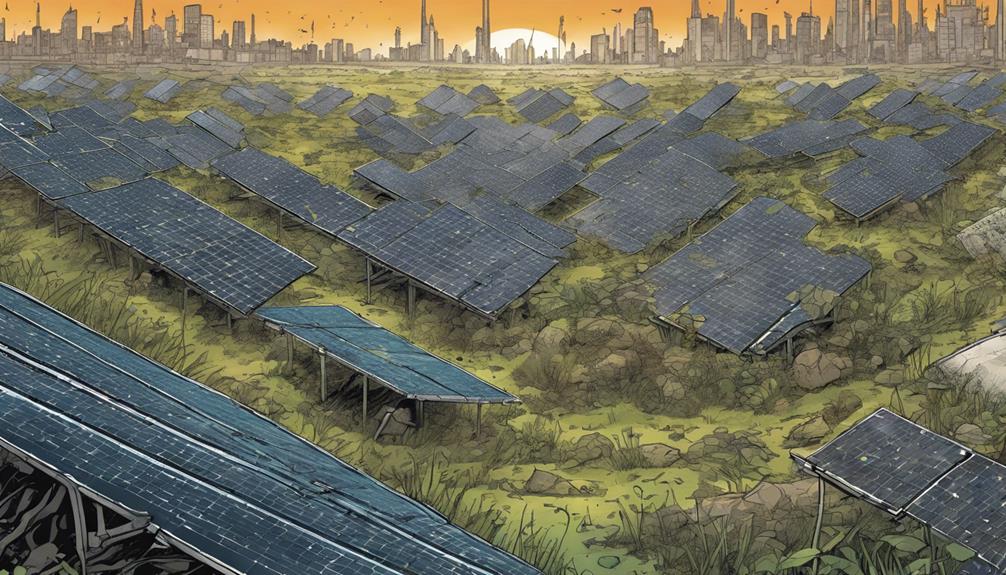
While solar panels are often hailed as a clean and renewable energy source, they pose significant eco-friendliness challenges, particularly in their production processes and waste management. As I investigate the environmental impact of solar panels, I'm struck by the complexity of the issue. It's not just about the energy they produce, but also about the resources required to manufacture them and the waste they generate.
- Recycling solar panels is a costly and challenging process, leading to a significant amount of waste.
- The production process involves hazardous materials, which can pose risks if not handled properly.
- The land required for solar panel installations can lead to habitat destruction and disruption of ecosystems.
Frequently Asked Questions
How Do Energy Storage Solutions Impact Wind Turbine and Solar Panel Efficiency?
"I'm curious about how energy storage solutions affect wind turbine and solar panel efficiency. In my opinion, efficient energy storage systems can boost both wind and solar power outputs, ensuring a steady supply of renewable energy."
Can Wind Turbines and Solar Panels Be Used in Conjunction With Each Other?
"I think wind turbines and solar panels can definitely be used together, complementing each other's strengths to provide a more reliable and efficient renewable energy system, especially in areas with varying wind and sunlight patterns."
What Are the Government Incentives for Adopting Wind Turbines and Solar Panels?
'As I explore the world of renewables, I uncover dazzling deals on wind turbines and solar panels. Governments offer generous grants, tax credits, and rebates to encourage adoption, offsetting initial costs and catalyzing a cleaner future.'
How Do Weather Patterns Affect the Performance of Wind Turbines and Solar Panels?
'As I consider renewable energy options, I realize weather patterns greatly impact performance – wind turbines rely on consistent wind speeds, while solar panels require sunlight, making ideal placement and maintenance vital for efficiency.'
Can Wind Turbines and Solar Panels Be Installed in Urban Areas?
'When in Rome, do as the Romans do' – that's why I think wind turbines and solar panels can be installed in urban areas, but it's essential to take into account noise pollution, space constraints, and aesthetics to make it a harmonious fit.
Which Form of Renewable Energy is More Cost-Effective and Efficient?
When considering renewable power comparison solar hydroelectric energy, it’s important to weigh the cost-effectiveness and efficiency. While solar energy may have lower initial costs, hydroelectric power is more efficient in the long run due to its consistent energy production. Ultimately, the best choice depends on specific location and needs.
What are the cost and efficiency implications of renewable energy compared to coal?
When discussing the cost and efficiency implications, renewable energy triumphs over coal. Renewable energy sources like solar and wind power often have lower long-term costs and require minimal maintenance compared to coal. Additionally, renewable energy is a more efficient and environmentally friendly option, making it a win-win choice for the future.
Conclusion
As I stand at the crossroads of renewable energy, the verdict is clear: neither wind turbines nor solar panels are a silver bullet.
Both have their strengths and weaknesses, like two sides of the same coin.
While wind turbines spin out efficiency, solar panels shine with eco-friendliness.
Ultimately, the choice between them is a delicate dance, weighing costs, impacts, and efficiency.
By embracing this complexity, we can harness the power of renewables to forge a greener future.
